20.02.2007
Game of the Round (1)
So the super tournament has started, although not without some adventures. Ivanchuk has found himself a participant at the nick of time, and everybody knows that this gives any chessplayer hopes for a rather successful performance. And really, in the first round Ivanchuk has almost taken a brilliant first step to success. Alas, only almost... Ivanchuk,V (2750) - Leko,P (2749) [C45] 1.e4 e5 2.¤f3 ¤c6 3.d4 exd4 4.¤xd4 Ґc5 5.Ґe3 Јf6 6.c3 ¤ge7 7.g3 d5 8.Ґg2 dxe4 9.0-0 0-0 Black can also struggle for equality after 9...Ґxd4 10.cxd4 10.¤d2 Ґb6 11.¦e1 A precise move order. Immediate 11.¤xe4 Јg6 12.¦e1 would have given Black an opportunity 12...Ґg4 and after 13.f3 Ґd7 14.¤xc6 Ґxe3+ 15.¦xe3 Ґxc6 an advantage is already his, Pavasovic-Lautier, 37th Olympiad 2006 11...¤xd4 It is also possible to move the rook on d8 right away or in a move. 12.¤xe4 Јg6 13.Ґxd4 ¤c6 14.Ґxb6 axb6 15.Јd2 Јf5 Leko is the first to turn off the theoretical roads, protecting himself from an unpleasant threat of Јd2-f4. Previously it occurred15...¦a5 16.Јf4 ¤e5 17.¦ad1 f6 18.b4 ¦a8 19.¤g5 White's activity looks threatening, but 19...Ґg4 (19...c6 also seems not losing) 20.¦d2 ¦fe8 (the important thing is not to "blunder away": 20...¦ae8?? 21.¦xe5! Rublevsky-Sasikiran, Khanty-Mansyisk 2005) 21.Ґd5+ ўf8, although seemingly risky, appears quite acceptable for Black. 16.h3 h6? In this way Leko prepares Ґc8-e6, but this move turns out to be a serious mistake. On16...¦d8 White can retain a slight initiative by way of 17.¤g5!?, so it is necessary to move the bishop on e6 at once: 16...Ґe6 17.¤g5 ¦ad8 18.Јe3 Ґd5, solving the opening problems. 17.g4 Јb5 The retreat 17...Јd7, trying to "bluff his way out" due to an idea of f7-f5, is too clumsy, dangerous for Black are both "automatically evident" 18.¤f6! gxf6 19.Јxh6 and more modest 18.Јf4 f5 19.¤g3 (19.Ґf1!?is dubious because of 19...g5!) 19...fxg4 20.Јc4+ ўh8 21.¦ad1; 17...Јa5 will be met by way of 18.b4; 17...Јe5, with an idea to provoke f2-f4, which will deprive the white queen of the f4-square is, of course, can be recommended, but I wouldn't like to be responsible for such a recommendation. A position on the diagram will do for a "Bluff-club" TV show. So... Do you believe than only in a couple of moves White will develop dangerous threats to black king? Oh, you don't?! And you are wrong! 18.a4! If you haven't jumped up on your chair after this move, than you have absolutely no respect for chess ... 18...¦xa4 19.¤f6+!! gxf6 [19...ўh8 20.Јc2] 20.¦xa4 Јxa4 21.Јxh6 White threatens to smash Black up with Ґg2-e4, and there is the only defense: 21...Јa5™ Loses 21...f5 22.Јg5+ ўh7 23.gxf5 ¦g8 24.Јh5+ ўg7 25.¦e4!+-; desperate 21...¤d4 leads to an obvious white advantage after 22.cxd4 Јxd4 23.¦e3!+/- 22.Јxf6 Leisurely build-up of threats being down a piece impresses (White is evidently going to return his queen to h6 after the preliminary Ґg2-e4), but it is well-known that the most beautiful thing in chess is the result. I think that 22.Ґe4! leads to a great white advantage.22...f5 23.Јg5+ (23.gxf5 Ґxf5 24.¦e3 Ґxe4 25.¦xe4? ¤e5-+) 23...ўh7™ (loses 23...ўh8 24.Јf6+ ўg8 25.Ґxf5 Ґxf5 26.gxf5+-and Black cannot prevent the rook's joining in the melee by way of ¦e1-e3 (e4) or ўg1-h2) 24.b4! Јa2 (All the other queen's retreats are still worse: a) 24...Јa3 25.Јh4+ ўg8 (25...ўg7 26.gxf5 ¦g8 27.ўh2 and Black feels sick) 26.gxf5 Јxc3 27.¦e3+-; b) 24...Јb5 25.Јh4+ ўg7 (on 25...ўg6 an immediate 26.g5! decides the issue(26.gxf5+ will surely be enough as well ) ) 26.gxf5 ¦g8 27.ўh2! (less precise 27.ўh1would allow Black, after having taken back a piece, to transfer his queen to the important defensive d6- square: 27...Ґxf5 28.Ґxf5 Јd5+ 29.Ґe4 Јd6) 27...Ґxf5 (does not help27...Јe5+ 28.f4 Јxc3 29.¦g1+ ўf8 30.Јh6+with a win) 28.Ґxf5 Јxf5 29.¦g1+ ўf8 30.Јh6+ ўe7 31.¦xg8 Јxf2+ 32.¦g2+- and White should win) 25.Јh4+! An important check! 25...ўg7 26.gxf5 ¦g8 27.ўh2! Ґxf5 28.Ґxf5 Јd2 29.¦e3 Јd6+ 30.Јg3++/- and White has great chances to win. The exchange of all the major pieces 30...Јxg3+ 31.¦xg3+ ўf8 32.¦xg8+ ўxg8+- leads most probably to a position lost for Black 22...Јc5 22...Ґd7!? looks like a worthy alternative. After23.b4 (23.Ґe4 ¦e8™) 23...Јb5™ 24.Ґf1 Јd5 25.b5 White has a certain advantage, he wins back a piece on the next move by way of 26.c4 Јd4 (26...Јd2 27.bxc6 Јxe1 28.cxd7) 27.Јg5+ or 26.bxc6 Ґxc6 27.ўh2 23.Ґe4 ¤e7 24.¦d1 Ivanchuk forces a draw. To the same outcome leads also24.Ґc2 ¤g6 25.Ґxg6 fxg6 26.Јxg6+ ўh8=. But the victory still seems attainable! After 24.Ґh7+! ўxh7 25.¦xe7 Јd6™ 26.¦xf7+ ¦xf7 27.Јxf7+ ўh6 28.g5+ (28.f4 Јd1+=) 28...ўxg5 29.Јg8+ ўh4 30.Јh8+ (30.Јxc8 Јd1+ 31.ўg2 Јd5+=) 30...ўg5 31.h4+ (31.Јxc8 Јd1+=) 31...ўg4 32.Јxc8+ ўxh4 33.Јf5! Forced variation leads to a queen ending in which Black's problems are, in my opinion, far from being over due to a constant threat of queens exchange. 24...¤g6 25.Ґxg6 fxg6 26.Јxg6+ ўh8 27.Јh6+ ўg8 1/2-1/2
XXIV SuperGM Morelia/Linares MEX/ESP (1), 17.02.2007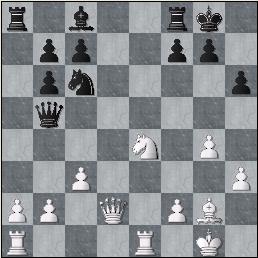
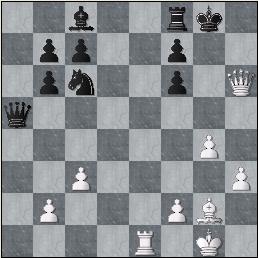
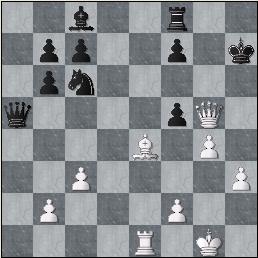
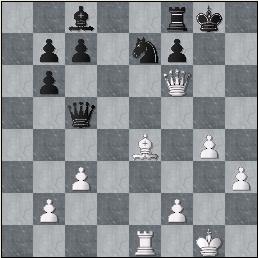
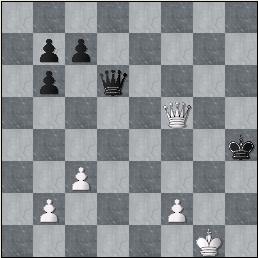
ALL ARTICLES BY AUTHOR
